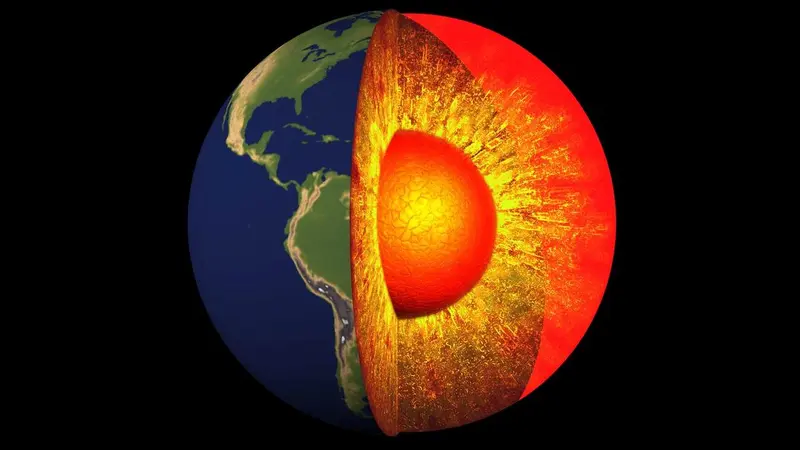Perhaps you already feel that the day is dragging on unbearably long? Likely, it’s not just your boring job to blame. The reason lies in the frivolous behavior of the inner core of our planet. More precisely, in its slowed rotation.
And if we’re being serious, a new study from the University of Southern California (USA) has confirmed that changes in the Earth’s inner core can indeed lead to an increase in the length of days.
Having analyzed the data on seismic activity in one corner planets The university team found that the inner core began to slow down around 2010. It is now moving backward relative to the Earth’s surface, slightly affecting its rotation in space. Scientists believe this could extend the length of a day on Earth by fractions of a second. However, this change will be difficult to notice, as it is so minor.

What do you need to know about the Earth’s inner core?
The inner core of our planet is a solid ball of molten iron and nickel, roughly the size of Month It is surrounded by a liquid outer iron core and is located at the very center. Lands at a distance of 4800 km from its surface.
Since the surrounding outer core is completely liquid, a solid and dense metal sphere can freely rotate under the influence of Earth’s magnetic field and the gravitational pull of the outer layers.
For many years, scientists believed that the inner core rotates faster than the Earth’s surface, the publication reported. Daily Mail However, Professor John Widdale, a geoscientist and lead author of the study, confirmed that the core has now reversed and slowed down.
“At the same time, the ‘dance of the inner core may even be livelier than we previously thought,’ he said.”

How did the scientists find out about this?
Without the ability to directly observe the inaccessible inner core of the Earth, researchers relied on data collected from seismic events.
Professor Videil and his colleagues primarily focused on recurring earthquakes. That is, on seismic events that occur in the same location (their seismograms are usually identical, so any deviations are quite telling for the scientists). The area of the South Sandwich Islands—a sub-Antarctic archipelago located in the South Atlantic—caught the researchers’ attention. In addition to 121 such local events from 1991 to 2023, the researchers also analyzed data from Soviet nuclear tests conducted between 1971 and 1974.
Professor Vidail was puzzled when he came across seismograms showing a slowdown in the movement of the Earth’s inner core around 2010. “But when we saw another two dozen observations that indicated this pattern, the result was confirmed. The inner core has slowed down for the first time in many decades,” the professor noted.
The team suggested that the slowdown could be caused by the sloshing of the liquid iron core, which generates the Earth’s magnetic field, as well as gravitational forces from extremely dense areas of the mantle.

